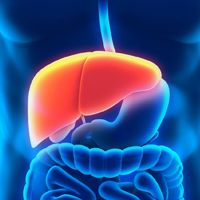Article
New Antiviral Combo Yields High Response Rate for HCV after Liver Transplant
Author(s):
A liver damaged by hepatitis C virus (HCV) can be replaced by transplantation, but HCV recurs universally and, unchecked, will damage the new liver as well. Study results show a new combination of direct-acting antivirals combined with ribavirin eradicated HCV for most transplant patients with recurrent HCV genotype 1 infection and liver damage.

A liver damaged by hepatitis C virus (HCV) can be replaced by transplantation, but HCV recurs universally and, unchecked, will damage the new liver as well. A new combination of direct-acting antivirals (DAA) combined with ribavirin (RBV) eradicated HCV for most transplant patients with recurrent HCV genotype (GT) 1 infection and liver damage in a small study presented at The Liver Meeting on November 10 in Boston, MA.
ParvezMantry, MD, hepatologist at Methodist Dallas Medical Center, Dallas, TX, discussed the natural history of HCV after liver transplantation during a packed plenary session. He explained that though HCV recurrence after transplant is associated with an accelerated disease course, bringing about cirrhosis in 20-30% of transplant recipients within five years, it is unknown who is more likely to have this accelerated course. Recurring HCV post-transplant had previously been treated with a combination of interferon and ribavirin; however, this regimen is limited by interferon-associated adverse effects and relatively low efficacy.
CORAL-I is an ongoing phase 2 trial that examined safety and efficacy of a regimen termed “3D,” which uses ABT-450, an NS3/4A protease inhibitor in combination with ritonavir; ombitasvir, an NS5A inhibitor; and dasabuvir, a non-nucleoside NS5B polymerase inhibitor. This regimen targets several steps necessary for HCV replication, and was used in combination with RBV in the open-label CORAL-I trial.
Patients (n=34, 79.4% male), all at least one year post-transplant and DAA treatment-naïve post-transplant, received 24 weeks of 3D+RBV, and were followed to measure sustained virologic response at 12 weeks (SVR12) and 24 weeks (SVR24) after therapy. The level of mild to moderate liver fibrosis targeted in CORAL-I was confirmed by liver biopsy. Study investigators had discretion for ribavirin dosing. Study participants will be followed to 72 weeks.
Because drug-drug interactions between the 3D regimen and immunosuppressives result in three- to seven-fold higher levels of the calcineurin inhibitors tacrolimus and cyclosporine, the protocol called for sharp dosing reductions and trough monitoring for both immunosuppressives.
In examining efficacy, investigators set SVR12 as the primary endpoint, and examined rapid virologic response (RVR), end of treatment virologic response (RVR), breakthrough and relapse, and SVR4 and SVR24. Laboratory abnormalities and adverse events, including allograft rejection were used to assess safety.
Results were striking: 100% of participants achieved RVR and SVR12. One patient had a virologic relapse within three days of completing treatment; this patient showed newly-developed resistance against all three DAAs. Thus, 97.1% of patients achieved SVR24.
Almost all patients reported adverse events (AEs), mostly mild and moderate; fatigue, headache, or cough occurred in at least a third of patients. One patient discontinued the study drug after more than 12 weeks of treatment, but did achieve SVR 12. Two other patients reported serious AEs not felt to be related to study medications.
Anemia was the most common laboratory abnormality. In all, 21/34 patients had some degree of anemia, with grade 1 anemia (hemoglobin < normal but >10 g/dL) seen in 11 of the 21. Five patients required erythropoietin, but none required transfusion. Investigators noted the known dose-dependent hemolytic anemia caused by RBV. Two patients had isolated total bilirubin elevations more than 3 times the upper limit of normal, and there were no other hepatic or renal laboratory abnormalities.
Immunosuppressive trough levels were generally maintained within therapeutic levels; of the five patients experiencing supra-therapeutic tacrolimus levels, four had dosing errors. There were no episodes of rejection or graft loss.
The high response rates shown in this study, said Mantry, may offer promise to arrest liver disease in transplanted patients with HCV before fibrosis progresses. CORAL-I’s study protocol is being amended to include participants with more advanced fibrosis and even cirrhosis, and will examine the efficacy of 3D with and without RBV.
2 Commerce Drive
Cranbury, NJ 08512
All rights reserved.




